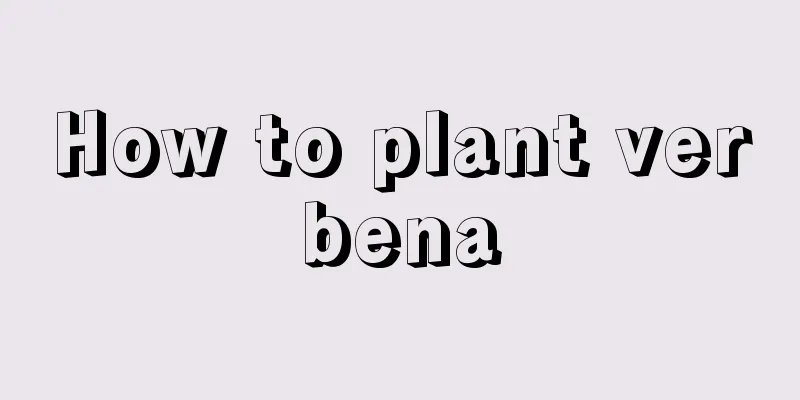Pepper planting technology and management methods

|
Chili peppers are widely grown in China, and are particularly popular in provinces such as Hunan, Sichuan, Guizhou and Yunnan. The annual sales volume of chili pepper is huge and its economic value is significant. Let’s learn about the planting techniques and management methods of peppers. 1. Preparation before sowing Control the sowing amount, about 50 grams of seeds are needed per acre. Soak the seeds in clean water for 3 hours, then disinfect them with agricultural streptomycin or other agents, and then they can be sown after washing. At the same time, prepare nutrient soil for seedlings by mixing garden soil with farmyard manure and adding appropriate amounts of pesticides such as carbendazim. After watering thoroughly, cover with a layer of fine soil and sow the seeds. After sowing, cover with another layer of fine soil to maintain soil moisture. 2. Timely transplanting Transplanting of pepper seedlings should be carried out according to the soil temperature, usually when the soil temperature reaches above 15 degrees. Transplanting too early may inhibit seedling growth due to low soil temperature and cause flowers and fruits to drop. When transplanting, the density should be adjusted according to the variety. For early-maturing varieties, the row spacing is about 45 cm and the plant spacing is about 30 cm; for late-maturing varieties, the row and plant spacing needs to be increased by about 25 cm each. It is best to transplant on a sunny afternoon for ease of operation. 3. Water and fertilizer management 1. Base fertilizer It is recommended to transplant peppers for autumn and winter crops in mid-August to early September; winter and spring crops in late January to early February; and early spring crops in late February to early March. When transplanting, it is recommended to combine land preparation and fertilization with the use of microbial agents and seaweed fertilizers. 2. Topdressing Start applying top dressing when the peppers begin to set fruits and swell. Combine fertilization with watering after each harvest. It is recommended to use seaweed fertilizer , with an application rate of 15-20 kg per mu. 4. Intertillage and Weeding After the pepper seedlings are transplanted and survive, inter-row cultivation and weeding should be carried out. After transplanting, shallow tillage should be carried out appropriately to improve soil permeability and break up soil compaction. As the plant grows, increase tillage efforts to promote root growth. Carry out the final tillage before closing the rows to improve soil structure and promote growth, while also removing weeds to prevent weeds from affecting seedling growth and reducing yield losses. 5. Disease prevention and control Pepper pests and diseases include bacterial wilt, powdery mildew, etc. To prevent and control bacterial wilt, disease-resistant varieties can be selected. In the early stage of the disease, spray the soil with agricultural streptomycin for 3 consecutive times, and irrigate the roots every 10 to 15 days for 2 to 3 consecutive times. To prevent and control powdery mildew, you can choose disease-resistant varieties and spray disinfectant with new lipid film before planting. In the early stage of the disease, you can spray with polyoxyethylene and DuPont Fortune. 6. Notes The suitable temperature for pepper growth should not exceed 30 degrees. High temperature will increase the plant's respiration and nutritional needs, which may lead to malnutrition and affect yield. Pay attention to sun protection and cooling down during the high temperatures in summer. Peppers are sensitive to many herbicides , so it is recommended to use inter-row weeding. The time for planting during the seedling raising period varies from region to region. Generally, the seedlings are three to four months old, and it may take five months in the north. In summary, due to differences in climate, soil, varieties, cultivation methods and other factors, water and fertilizer management and plant protection drugs are for reference only. Please make adjustments based on local agricultural technology recommendations.
|
<<: What herbicide is best for controlling trifoliate grass?
>>: Pitaya planting and cultivation techniques
Recommend
What is the best month to plant grape seedlings?
When to plant grape seedlings Grape seedlings are...
When does the chrysanthemum bloom?
1. When does it bloom? I believe many people must...
Seeding propagation method of Prunus mume
Seeding propagation method of Prunus mume Seed ha...
How to care for pomegranate bonsai and what to pay attention to
Feng Shui meaning of pomegranate bonsai Pomegrana...
When is the best place to plant ginseng?
Requirements for planting ginseng 1. Temperature ...
When is the flowering period of hyacinth and why does hyacinth not bloom?
1. When is the flowering period? The flowering ti...
How to grow cineraria on the balcony, what should be paid attention to
1. Light giving It is a very light-loving plant a...
How to grow Pyracantha bonsai
1. Sufficient sunlight is required Sunlight is cl...
Cultivation methods and precautions of Japanese cinnamon
Osmanthus fragrans is relatively easy to grow. Th...
How to make old jasmine branches sprout and how to prune old branches
1. How to make old jasmine branches sprout 1. Pro...
Purple peony's growing environment and local conditions
Purple Peony Growth Environment and Conditions Pu...
How to quickly root azalea stumps
1. Watering rooting powder If its roots are still...
Can Houttuynia cordata be grown in the north?
Can Houttuynia cordata be grown in the north? Hou...
What are the functions of shrimp flower
The ornamental effect of shrimp flower There are ...
The difference between Ixora and Hydrangea
1. Differences in plant types Ixora is a shrub wi...









